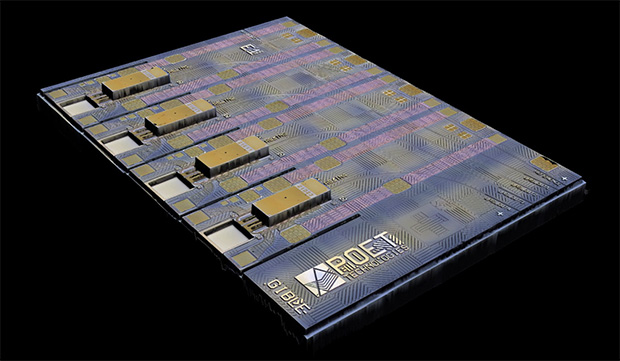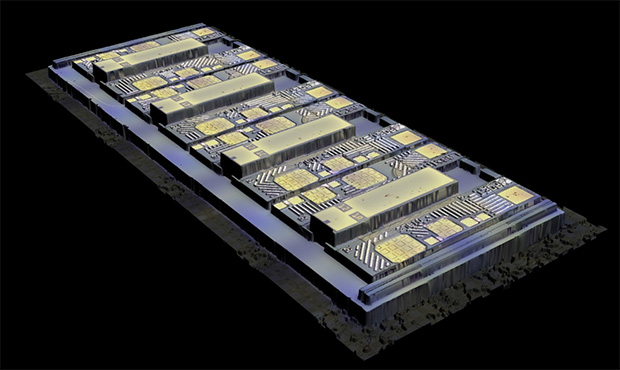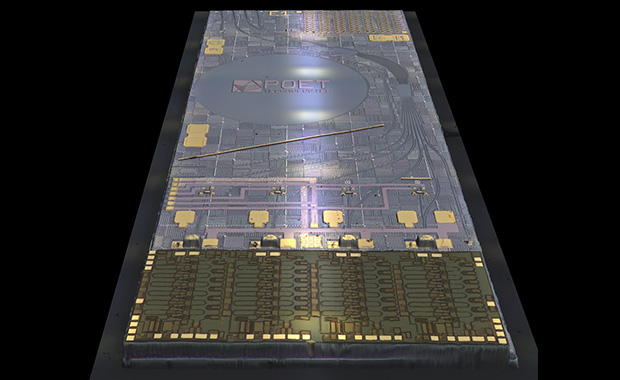
AI has been one of the hottest topics of discussion in 2023. But for all of the talk about what artificial intelligence software applications can do, there has been little said about how these programs do it. One company that is providing essential hardware components to power the next generation of AI development is POET Technologies.
Here is an introduction to this company that has recently commercialized its breakthrough technology.
What makes POET Technologies interesting?
POET Technologies powers AI with light sources and light engines designed for the rapidly growing artificial intelligence market. For AI to continue to advance, the industry must be able to process data at faster speeds and with designs that use less power. POET’s unique light sources and light engines do both of those things and at lower cost and lower power consumption than existing solutions.
All POET products are built on the company’s proprietary optical interposer platform, which is the cornerstone of all of its products and the process called “the semiconductorization of photonics”. Using light over optical fiber instead of electrons through copper, POET employs chip-level lasers and other components to move data at high speed and allow industries like AI, datacom, telecom, wearables, LIDAR, and more to evolve and miniaturize their products.
Some U.S.-based shareholders of POET have recently received a message from Fidelity asking if they would be interested in lending out their shares of the company in return for an interest payment:
Don’t. There is some shorting going on in POET’s NASDAQ-listed stock (ticker symbol: “POET”), but because the volume is low, the short sellers can’t buy in the open market without increasing the price, which is why they want to borrow your stock – for cover. Don’t lend out your shares. It only diminishes the value of your investment and most of the interest that they pay goes to Fidelity, not to you.

Who is POET’s ideal client?
POET creates solutions for the AI and datacom industries. In both of those industries, the company is working with Tier 1 device suppliers to bring advanced photonics products to the market. A Tier 1 company is defined as a large chip manufacturer, network infrastructure supplier, or hyperscaler whose primary customers are in the retail market. The company currently has seven customers and 11 projects, with many more expected in 2024.
The company says its ideal customer is one with the desire to leap over competition with a low-cost, more highly integrated solution that can be adopted into existing infrastructure or be adapted for novel designs that operate at higher speeds. These companies understand that the traditional method of assembling photonics devices has an increasingly narrower path forward and new technologies are required to continue to meet the demand for more data.
What are some of the company’s recent highlights?
POET’s photonics-based innovations will continue to expand in applications at a faster rate than conventional technologies, including silicon photonics. Why? Because it is an integration technology. POET takes the best performing devices available that provide the functionality needed and connects them without compromise. Material sets associated with these devices are optimized for peak performance and longevity independently before they are integrated onto a single chip by POET.
At OFC 2023, an industry conference held annually in San Diego, POET unveiled an industry-first 400G transceiver chiplet. POET Infinity™ earned rave reviews from attendees and since then the company has developed an 800G transceiver module with two POET Infinity™ chiplets combined in one package in a daisy-chain design. These chiplets were presented at CIOE in Shenzhen, China, in September and garnered the company significant new interest from market leaders in that country. The 800G transceiver module represents a step change for the industry, allowing datacom networks to deliver far more speed. That development results in faster downloads, less latency for networking applications, more reliable connectivity, and much more.
In 2023, POET began to organize its solutions into product lines. Along with POET Infinity, these include: POET Starlight™ and POET LightBar™ for AI; POET ONE, a single-chip 100G CWDM transmit and receive optical engine; and POET Legacy, which includes 100G CWDM4, LR4 and 200G FR4 optical engines.

What are the company’s plans for revenue growth?
The company’s growth phase is accelerating as it prepares for the mass manufacturing of optical engines and light sources in late 2023 and early 2024, and with the recently announced addition of innovative optical modules to its product portfolio. These include a prototype 400G transceiver module in a QSFP-DD package and that aforementioned 800G transceiver module with two POET Infinity™ chiplets, and an 800G DSP in a QSFP-DD package (scalable to 1.6T in an OSFP package).
POET has managed to commercialize its technology with its hybrid-integration platform. Through a joint venture company called Super Photonics Xiamen (SPX) it is ready to fulfill large-scale product orders. SPX is co-owned by Sanan IC, part of Sanan Optoelectronics, one of the world’s leading compound semiconductor wafer foundries. More than 30 engineers are dedicated to SPX, which assembles the products built from the POET Optical Interposer™. Using state-of-the-art equipment, SPX is prepared for the production volume POET is actively building from its customer base.
POET’s teams in Shenzhen, Singapore, and Allentown, Pennsylvania, are also working in harmony to generate new products and customize solutions for the company’s roster of clients.
What is the best thing about POET Technologies?
The company appears poised for explosive growth. It has no debt, has the manufacturing capability through SPX to execute mass production volumes that global chip-manufacturing leaders demand, and has a solution the world needs. The kind of advancements the company has made with photonics demonstrate the promise of the entire field. POET’s team of executives who have worked for decades in the optoelectronics industry are keen to bring new ideas to the market that work for what’s needed now and in the future.
Disclaimer:
This text is provided for informational purposes only, and not intended to be investing advice. The information we provide are on an as-is basis. We make no representations as to accuracy, suitability, or validity of any information and will not be liable for any errors, omissions, or delays in this information, or any losses, or damages arising from its use.

